Why Surrealism Matters (Why X Matters Series) Polizzotti
Visit to download the full and correct content document: https://ebookmass.com/product/why-surrealism-matters-why-x-matters-series-polizzot ti/
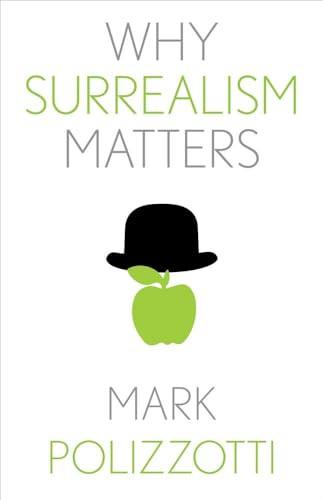
More products digital (pdf, epub, mobi) instant download maybe you interests ...
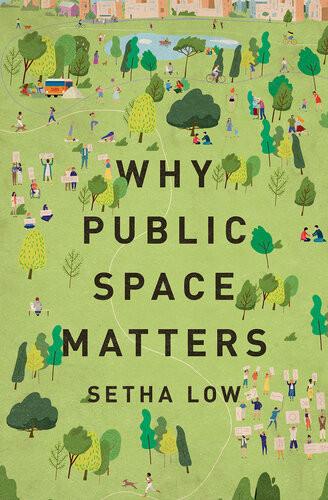
Why Public Space Matters Setha Low
https://ebookmass.com/product/why-public-space-matters-setha-low/

Why Privacy Matters 1st Edition Neil Richards
https://ebookmass.com/product/why-privacy-matters-1st-editionneil-richards/

Why Privacy Matters Neil Richards
https://ebookmass.com/product/why-privacy-matters-neil-richards/
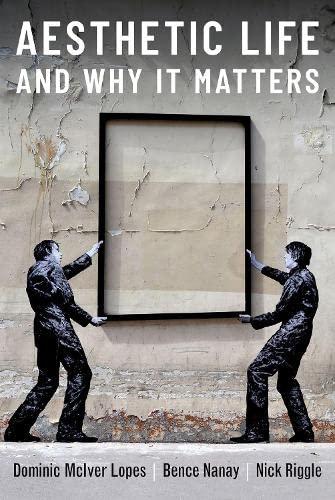
Aesthetic Life and Why It Matters Dominic Lopes
https://ebookmass.com/product/aesthetic-life-and-why-it-mattersdominic-lopes/
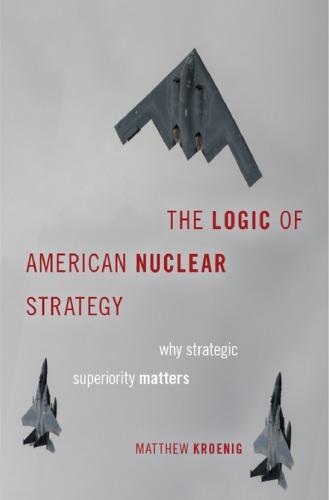
The logic of American nuclear strategy: why strategic superiority matters Kroenig
https://ebookmass.com/product/the-logic-of-american-nuclearstrategy-why-strategic-superiority-matters-kroenig/

Metadata Matters John. Horodyski
https://ebookmass.com/product/metadata-matters-john-horodyski/

Song of the Earth: Understanding Geology and Why It Matters Elisabeth Ervin-Blankenheim
https://ebookmass.com/product/song-of-the-earth-understandinggeology-and-why-it-matters-elisabeth-ervin-blankenheim/
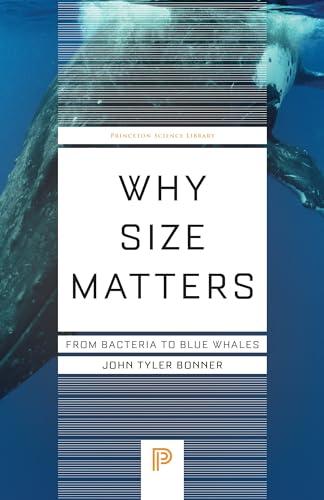
Why Size Matters: From Bacteria to Blue Whales (Princeton Science Library, 145) Bonner
https://ebookmass.com/product/why-size-matters-from-bacteria-toblue-whales-princeton-science-library-145-bonner/

Why Politics Matters: An Introduction to Political Science 3rd Edition Kevin L. Dooley
https://ebookmass.com/product/why-politics-matters-anintroduction-to-political-science-3rd-edition-kevin-l-dooley/
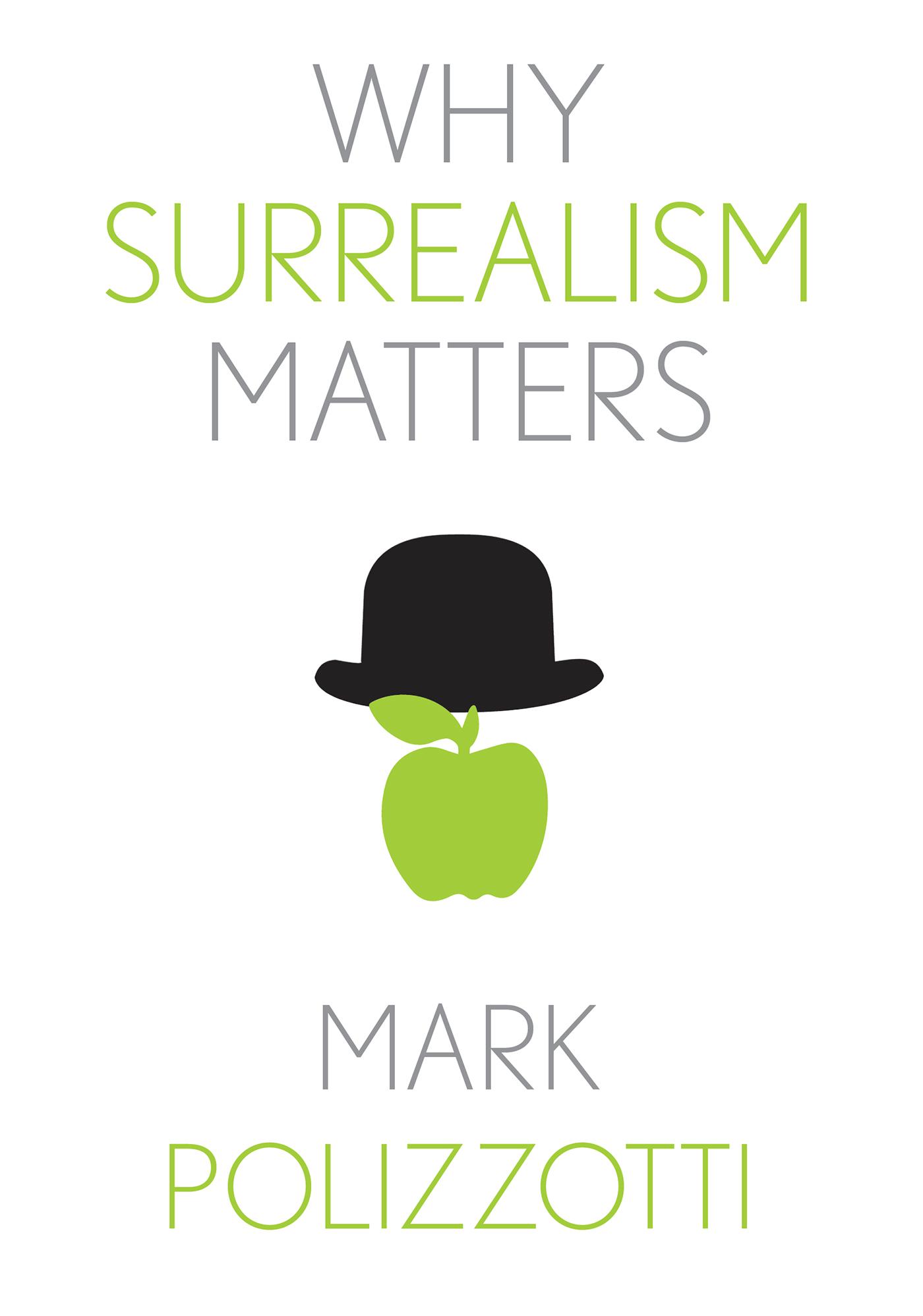

more praise for
why surrealism matters
“The crowning achievement of Polizzotti’s lifelong engagement with Surrealism, this much-needed contemporary handbook focuses on the core insights of Surrealist thought and its applications in life and art, which remain of ‘ongoing pertinence.’ . . . Polizzotti reconfirms the movement’s original thought that ‘a true revolution of the human condition must begin with a revolution of the mind.’”
—Pierre
Joris, author of ANomadPoetics:Essays
“Polizzotti makes the case for Surrealism as ‘a radical new means of seeing the world,’ a revolution of the mind, whose anarcho-poetic assault on colonialism, capitalism, and Christofascism is more relevant than ever. WhySurrealismMattersis your passport to the Republic of Dreams.”
—Mark Dery, author of BorntoBePosthumous:TheEccentricLife andMysteriousGeniusofEdwardGorey
“‘Change life,’ said the Surrealists. With immense elegance and erudition, Polizzotti demonstrates that Surrealism is a living social movement forged through the collective refusal of authoritarianism, oppression, and exploitation.”
—Abigail Susik, author of SurrealistSabotageandtheWaronWork whysurrealismmatters
why surrealism matters
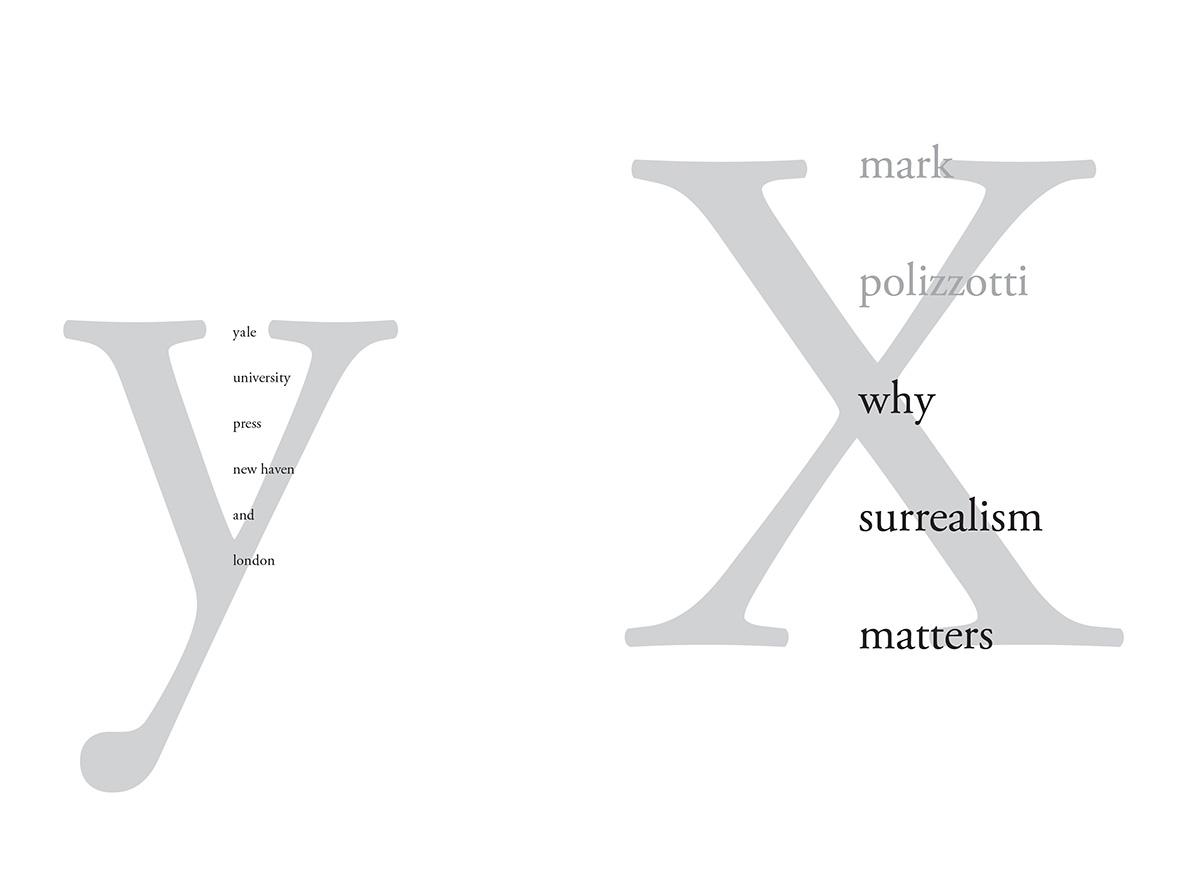
“Why X Matters” is a registered trademark of Yale University.
Copyright © 2024 by Mark Polizzotti. All rights reserved.
This book may not be reproduced, in whole or in part, including illustrations, in any form (beyond that copying permitted by Sections 107 and 108 of the U.S. Copyright Law and except by reviewers for the public press), without written permission from the publishers. yalebooks.com/art
Portions of this book were adapted, with numerous linguistic and philosophical revisions, from talks given at the University of Texas at Dallas; the National Academy Museum; the University of Tennessee; the Metropolitan Museum of Art; and the Helix Center for Interdisciplinary Investigation, as well as from the following essays:
“In Search of André Breton” (Agni40, fall 1994); “Art in Its Savage State” (introduction to André Breton, SurrealismandPainting[Boston: MFA Publications, 2002]); “Reality Games” (NewRepublic, May 12, 2003); “An Advertisement for Heaven” (Sienese Shredder1, winter 2006); “Profound Occultation” (Parnassus30:1–2, spring 2008); “The Doctor Is Unconscious: Surrealism’s Freudian Slips” (Tether2, summer 2016); “Breton’s Smartphone: Surrealism in the Digital Age” (Catamaran28, spring 2020); “The Magnetic Fields” (4Columns, October 16, 2020); “Slumber Party” (Apollo, April 2022); and “Surrealism’s Children” (Liberties, fall 2022).
Set in Adobe Garamond type by BW&A Books, Inc.
Library of Congress Control Number: 2023939899
ISBN 978-0-300-25709-0 (hardcover : alk. paper)
eISBN 978-0-300-27386-1
A catalogue record for this book is available from the British Library.
This paper meets the requirements of ANSI/NISO Z39.48-1992 (Permanence of Paper).
also by mark polizzotti
S:ANovel(in collaboration with Jean Echenoz, Harry Mathews, et al.)
LautréamontNomad
RevolutionoftheMind:TheLifeofAndréBreton
TheNewLife:Poems
LosOlvidados
BobDylan:Highway61Revisited
DisorderingMyLibrary
SympathyfortheTraitor:ATranslationManifesto
As editor
AndréBreton:Selections
Révolutionssurréalistes
TheyKnewWhatTheyWanted:PoemsandCollagesbyJohn Ashbery
TheDrunkenBoat:SelectedWritingsofArthurRimbaud
For my teachers:
Jean-Louis Bouttes
Jean Gaudon
Rika Lesser
Marie-Rose Logan
Sylvère Lotringer
Linda Orr
Michael Riffaterre
Roger Shattuck
Andfor J.
Introduction: Does Surrealism Matter?
one What Is Surrealism?
two Transformation: The Search for Marvels
three Appropriation: Love and Theft
four Subversion: Identity Paradigms
five Transgression: Free Unions
six Disruption: Free Radicals
seven Revolution: Why Surrealism Matters
Notes Selected Bibliography
Acknowledgments
Index
introduction:
does surrealism matter?
Does Surrealism still matter? Has it ever mattered? The question is hardly new, and has been debated practically since the movement was launched. Already in 1930, a mere six years after its brash inauguration, the twenty-something poet René Daumal was cautioning André Breton, Surrealism’s founder, primary theorist, and author of the ManifestoofSurrealism(1924), against the threat of irrelevance through popular acceptance: “Beware, André Breton, of one day figuring in study guides to literary history; whereas if we aspire to an honor, it is to be inscribed for posterity in the history of cataclysms.”1 (An apt warning, as Breton and many other Surrealists have since figured in quite a few study guides.) A dozen years later, Breton himself, in exile in the United States during World War II, fulminated to students at Yale University against the “impatient gravediggers” who declared Surrealism over and done.2 Given that many of the young men in the audience were thinking about their looming draft notices, we can imagine that they, too, were wondering how relevant Surrealism was to their lives at that moment. And today, as Surrealism marks its centennial, and as its fortunes over the past fifty years have risen, fallen, and risen again, it’s a question worth pondering once more.
Indeed, much like the students at Yale, young people of the twenty-first century could hardly be faulted for wondering what a bunch of eccentric writers and artists showing off their dream states could have to do with such pressing concerns as social and racial injustice, a faltering job market, gross economic inequities, the decimation of our civil liberties, questions of gender identity and equality, environmental devastation, education reform, or, once again as I write this, the specter of world war. All the more so in that the word “surreal” has come to stand, in the popular imagination, for
a vague cluster of things, a catchall term that runs the gamut from the unnerving to the merely kooky.
The answer is that Surrealism engaged with all of these crises. To cite several examples: The Surrealists’ outspoken critiques of French colonialism and racism share many points in common with current debates about racial equality and social justice. Their opposition to war and the military, dating as far back as World War I, was echoed in protests against France’s involvement in Algeria and America’s war in Vietnam, among others. The frankness with which they addressed sexuality, though this does not airbrush the more than equivocal position of women in the movement, was audacious for its time, and has had lasting echoes in contemporary attitudes. Their skepticism about work is almost a direct pre-echo of today’s Great Resignation. In addition, their unflagging resistance to the constraints preached by the double-act of Catholicism and bourgeois morals helped pave the way for our more secular, comparatively less regulated, times. And their challenge to the rigid, rote-based educational system used in France for much of the twentieth century predates the pedagogical reforms of Piaget and Montessori. Little wonder that the Surrealist declarations spray-painted on the walls of Paris during the May 1968 student protests, though they had been coined more than forty years earlier, sounded as if freshly minted.
Even those unaware of Surrealism’s influence on aspects of our social and political existence acknowledge the movement’s impact on everything from fine art and literature to advertising, design, and popular culture. Without the Surrealist concept of “black humor,” for instance, it’s difficult to imagine the Theatre of the Absurd, Monty Python, the cinema of David Lynch, or any number of recent and current film and TV offerings. The group’s practice of automatic writing feeds directly into the work of Bob Dylan, the Beats (especially William Burroughs’s cut-ups), the New York School poets, and many others in their wake. Their art exhibits and demonstrations forecast the later emergence of performance art, installation art, and multimedia constructions. And Surrealist-
inflected imagery has gotten so prevalent that it doesn’t so much fade into the landscape as become the landscape.
Still, merely being a precursor is not enough. To my mind, Surrealism’s true legacy is less as a forerunner than as a disruptor, something that perpetually challenges the existing paradigms and seeks new forms to maintain its emotional intensity. Or again, as a code-mixer, which takes in elements of its past, present, and projected future and recombines them, reworks them, reimagines them into something new, and then something newer. While some members’ actions and attitudes might seem less than satisfactory, especially by current standards (which themselves will be reevaluated by future generations), I believe that their involvement with the issues listed above has much to say to the present moment, in what they got wrong as much as in what they got right.
One of Surrealism’s main drivers was a refusal of the values that European society tried to force on them. As political beings, they abhorred the bellicose jingoism that came screeching to the forefront during the War of 1914–18, and they felt revulsion not only toward the war itself but also toward the societal status quo that had fostered it, as well as the economic disparities, blatant racism, and intellectual blandness that went with it. As writers and artists, they repudiated—at least in theory—the careerism and complacency that underscored so much literature and art, and that led to creative stagnation, not to say to a tacit or overt endorsement of the crumbling social contract. By nature, Surrealist works are animated by an emphatic dissociation from the reigning orthodoxy, whether political, societal, or aesthetic.
The means by which the Surrealists sought both to reject the Western world’s menu of choices (its murderous oppression as well as its brain-deadening banality) and to infuse human life with a higher and more consequential meaning followed several main avenues: the search for marvels, whether through automatism, unconscious states, or the exploration of chance and coincidence; the emphasis on humor and play; the elevation of desire and sexuality into a revolutionary force; the constant search for new
expressive forms, along with the transmutation of ordinary objects into objects of desire; and the reimagining of political activism not as a basic wage-and-labor program but as a much more wide-ranging liberation of the human mind. Of these, the aspect of Surrealism that to me epitomizes why it continues to resonate through changing trends and urgencies is its unwavering belief that the marvels it sought were a force for universal emancipation, within everyone’s reach. The aim was to tap into previously unsuspected resources and unleash the potential we all possess for wonder, invention, and salutary rage.
With this in mind, the present book focuses on how Surrealism’s varied modes of expression—verbal, visual, conceptual, political, aspirational, and experiential—participated in a design that far outstripped aesthetics, one that necessarily remains fluid and that continues to open new possibilities. Otherwise put, Surrealism’s importance lies not so much in the works it produced as in the attitudes underlying them. Those who equate the movement with names such as Salvador Dalí, Joan Miró, Yves Tanguy, Paul Eluard, and Robert Desnos might find this surprising. But though Surrealism is now generally considered a movement in literature and the arts, and while its principal members indeed used artistic means, their initial impulses were mainly philosophical, political, and experimental. Breton, a former medical student who had studied neurology and psychiatry, defined it with scientific tonalities as “psychic automatism in its pure state, by which one proposes to express . . . the actual functioning of thought.”3 Surrealism in its essence tends not toward aesthetics but toward a radical new means of seeing the world, even a set of ethical guideposts.
To take this one step further, it has often been charged that, when compared with such currents as Impressionism, Cubism, or Expressionism, Surrealism yielded relatively few iconic artworks—a view most notably posited eighty years ago by Alfred Barr Jr., in the catalogue to his 1936 “Fantastic Art, Dada, Surrealism” show at the Museum of Modern Art: when Surrealism stops being “a cockpit of controversy,” writes Barr, “it will doubtless be seen as having
produced a mass of mediocre pictures . . . a fair number of excellent and enduring works of art, and even a few masterpieces.”4 It’s true that for every melted watch and fur-covered teacup, for every Nadja and ParisPeasantand Chienandalou, there are hundreds of books and visual works that seem at best derivative, at worst frankly pedestrian, the stuff of which parodies are made. But is that the point? Without these so-called lesser works (and who’s to judge?), we’d have a much poorer illustration of what Surrealism engendered, what it inspired, and what it made possible.
That’s one challenge when gauging Surrealism’s legacy. Another is its ambiguous status as, on the one hand, a mode of thinking and acting that forged pathways to liberation, and on the other, the brainchild of all-too-human individuals subject to many of the same prejudices and strictures they sought to reject. While this paradox has been readily seized upon by the movement’s critics and has troubled the consciences of its boosters, it provides a valuable forum in which to discuss these issues objectively and clear-sightedly.
Yet another challenge is how much prominence to accord André Breton. Yes, it is his Manifestoof 1924 that stands as Surrealism’s foundational document, and his autobiographical account Nadja (1928) as its most famous literary work. Yes, it was he who maintained the existence of the Paris group throughout his life. And the statements cited in reference to the movement are most often his, in large part because he formulated them more convincingly than anyone else: like it or not, Breton remains an unavoidable reference in any general discussion of Surrealism. At the same time, it’s all too easy to draw an equation between Breton as a person and Surrealism as a current of thought. While there is a great deal of overlap, it is crucial to maintain a distinction between the ideas Breton propounded and the ways they were put into practice by him and others, how they developed on their own, and how they were transformed in directions often unintended by his initial formulations. As the Japanese Surrealist Takenaka Kyūshichi noted as early as 1930—the same year as René Daumal’s warning—“True Surrealists
take a step beyond Breton. They are not confined by the Surrealism of Breton’s ‘Manifesto.’ ”5
So while Breton appears frequently in this discussion, it is in full awareness of research that has been, and is being, done to reenvision the history of Surrealism though other lenses—specifically, to look past the largely Western European, white, male narrative that has long dominated Surrealism studies, and of which Breton and many of the best-known Surrealists are prime examples. One of my goals in the following chapters is to examine why Surrealisms (plural) matter—non-Western Surrealisms, gender-fluid Surrealisms, racially diverse Surrealisms—and in what ways these variants might be even more relevant to today’s world. To fully understand their importance, however, we must first understand where they come from. The fact is that many, though not all, of these expressions took their inspiration from what Breton set in motion, even if they then followed very different paths.
In keeping with the Surrealist enterprise, which aimed at a seamless fusion of art, literature, ethics, identity, biography, politics, philosophy, attitude, and the overall business of living, the threads of various discussions will necessarily weave in and out over the course of this book. To try to cloister them, as many previous commentators have done, is to lose the essential energy of what makes Surrealism valid to begin with. Again, there are many Surrealisms, and even the movement’s most dogmatic members, when trying to define it, have tended to contradict themselves, sometimes with abandon.
That said, in the interests of making this discussion not completely unintelligible, I have broken the book into rough clusters of topics: after a first chapter that seeks to provide the background and key themes, the chapter “Transformation” examines the group’s quest for marvels through such means as automatism and dreams, the transformation of spaces, and the transmuting of objects and expressive forms. “Appropriation” focuses on how Surrealist techniques repurpose such pursuits as games and advertising, as well as on questions of race and of cultural absorption. The chapter “Subversion” looks at an ethics of Surrealism as it applies to personal
conduct, societal norms, and the power of humor. “Transgression” interrogates questions of identity, especially with regard to sexual politics and the role of women in the movement. “Disruption” explores the balance between the Surrealists’ political engagement, specifically with the Communist Left, and the desire to preserve their independence of thought and action. And “Revolution” evaluates the ongoing legacy of Surrealism and the lessons that might be drawn from the movement’s successes and failures.
This book, then, is not intended as yet another history of Surrealism, nor does it claim to be comprehensive. Rather, it seeks to open a vista onto Surrealism’s major concepts and aims, its impact, and, most of all, its ongoing pertinence. More than providing answers, it hopes to provoke questions and further debate. One of Breton’s many attempts to encapsulate the movement’s wideranging goals was: “Transform the world, change life, refashion human understanding from top to bottom.”6 This is admittedly a tall order, but one that arguably has kept Surrealism from ossifying into an artifact, to be dusted off every few years, set on an exhibition shelf, then shoved back in the drawer.
As it happens, that last assertion has been given a regrettable and unexpected opportunity to be tested: Conceived shortly before Covid-19 upended the world and composed in the years that followed, this book was written against a backdrop of upheavals that included a global pandemic and its resultant social disruptions; the murders of George Floyd, Breonna Taylor, Ahmaud Arbery, and too many others; an ongoing reckoning (or lack thereof) with legacies of racial injustice and gross economic disparities; stark political polarization in country after country, with the attendant specter of increasingly autocratic regimes; and, as I write, the catastrophe of war in Ukraine.
Surrealism emerged under disturbingly similar circumstances, spurred by the carnage of World War I, fueled by the political and social unrest that followed throughout Europe, and haunted by the Spanish Influenza pandemic of 1918–20. Its legitimacy and relevance were called into question many times over the following
decades, and it was all but eclipsed by the advent of the Second World War and the subsequent Cold War, and by the threat of nuclear annihilation that we have in no way eliminated, merely incorporated into our daily existence. Is it coincidence that the movement is now experiencing a resurgence of interest, as evidenced by the stream of recent publications and exhibitions highlighting it as both a historical and contemporary phenomenon?7
When René Daumal laid the accent on the “cataclysmic” aspect of Surrealism, rather than on the writings, paintings, films, and other artifacts it was busily producing, he foresaw a crucial but, at the time, little-recognized truth: that the permanent newness and effectiveness of the Surrealist message will depend on its continued capacity to respond to the upheavals forced upon it and incite its own upheavals in return, rather than its ability to fabricate art or literary objects. More than any other intellectual current of modern times, Surrealism posited a world that could embrace, equally and indivisibly, the violence of rebellion and the passion of creation. This book aims to parse out what is living and what is dead in Surrealist ideas, what is vibrant and what stale; to evaluate why, and whether, the revolution that Surrealism sought to foment can still claim the qualifier, as one of its tracts put it nearly a century ago, of “first and always.”
what is surrealism?
Surrealism, starting fifteen years ago with a discovery that seemed to involve poetic language exclusively, has spread like wildfire in pursuing its course, not only in art but in life. It has provoked new states of consciousness and overthrown the walls beyond which it was immemorially supposed to be impossible to see; it has—as is being more and more generally recognized— modified sensibility, and taken a decisive step towards the unification of personality, which it found threatened by an ever more profound dissociation.
ANDRÉ BRETON, WHATISSURREALISM? (1934)
Surrealism as a defined entity saw the light of day in late October 1924, with the publication of André Breton’s ManifestoofSurrealism, though the movement, as yet unnamed, had actually debuted with another text five years earlier. This prequel to the Manifestowas the automatic prose poem TheMagneticFieldsby Breton and Philippe Soupault, written in the spring of 1919 and published in book form in 1920. But owing to that volume’s scant impact at the time and the disruption of Paris Dada in the early 1920s, the Manifestonow stands as the movement’s official launch.
It does so all the more in that the Manifestolargely offset The MagneticFields’ initial lack of notice. As a summons to action, it is a masterstroke, a stirringly expressed yet cannily reasoned clarion call to venture into the mind’s uncharted territories. Though published by a small press, it caused an immediate hubbub in the hypersensitive world of Parisian arts and letters, creating a recognizable profile for a movement that at the time had scarcely more to boast for itself than a vague roster of little-known adherents, a temporary office space (the short-lived Bureau of Surrealist Research at 15 Rue de Grenelle), and a few obscure volumes of poetry. In this light, the flurry of activity that accompanied Surrealism’s premiere in the final months of 1924, including the group’s broadside ACorpse(which
spat on the novelist Anatole France, who had just been laid to rest with state honors), multicolored stickers bearing Surrealist slogans (“If you like love, you’ll love SURREALISM”), leaflets handed out in the streets, and the first issue of their house periodical LaRévolution surréaliste, stands as nothing so much as an aggressive promotional campaign, with Breton’s Manifestoas its lead press release.
As Breton was the first to recognize, the publication of the Manifestowas more concretization than origination, “the codification of a state of mind that has manifested itself sporadically in every age and in every country,”1 and that Surrealism itself was therefore, by nature, timeless. Though the text gives thrilling new expression to a series of precepts, it also acknowledges a wide range of antecedents. These include writers and artists whose ideas and attitudes prefigured Surrealism, such as Sade, Poe, Dante, and, “in his finer moments,” Shakespeare; black humorists from Swift forward; English Gothic novelists (Matthew G. Lewis’s gloriously over-the-top TheMonkwas a particular favorite); the German Romantics; poets of a darker, more decadent bent, such as Charles Baudelaire and the self-styled Comte de Lautréamont (Isidore Ducasse); the Symbolists, from the poets Arthur Rimbaud and Stéphane Mallarmé to the painter Gustave Moreau; and such unclassifiables as Raymond Roussel, Alfred Jarry, and the outsider phoneticist Jean-Pierre Brisset. (Although they are not named, Breton could also have included such artists as Blake, Bosch, Coleridge, Fuseli, Goya, Max Klinger, Alfred Kubin, and Odilon Redon.)
The Surrealist movement was also inspired and honed by a constellation of external, time-specific elements in the years preceding its launch, ranging from historical upheavals such as the wave of anarchist bombings in the late nineteenth century and the carnage of World War I, in which many of the future Surrealists served, to the emergent discipline of Freudian psychoanalysis, technological advances in transportation and communications, and such ephemera as fashion trends, popular theater and film, and common household products. Also key were the Indigenous arts of
Oceania and North America (of which the Surrealists were early champions), along with the riotous tangle of avantgarde aesthetic currents, many now forgotten, that elbowed for prominence in the late nineteenth and early twentieth centuries. All of these helped shape the thought processes that brought it into being, and that have become part of the “Surrealism” we recognize today.
Breton’s Manifestoopens with the proposition that “man, that inveterate dreamer,” has been stifled by the humdrum vapidity of modern life, as imposed by centuries of Greco-Roman rationalism; and it ends with the proclamation: “It is living and ceasing to live that are imaginary solutions. Existence is elsewhere.” In between, the text jumps among various registers, from the evangelistic (“The time is coming when [poetry] decrees the end of money and by itself will break the bread of heaven for the earth!”) to the hyperbolic (“Surrealism is the ‘invisible ray’ which will one day enable us to win out over our opponents”) to the blatantly tongue-in-cheek (recipes for using Surrealism “against death” and “to catch the eye of a woman you pass in the street”). It also provides the now-canonical definition of Surrealism that has been quoted in virtually every commentary on the movement:
SURREALISM, n. Psychic automatism in its pure state, by which one proposes to express verbally, by means of the written word, or in any other manner the actual functioning of thought. Dictation of thought, in the absence of any control exercised by reason, exempt from any aesthetic or moral concern.
ENCYCL. Philos. Surrealism is based on the belief in the superior reality of certain forms of previously neglected associations, in the omnipotence of dreams, in the disinterested play of thought. It tends to ruin once and for all all other psychic mechanisms and to substitute itself for them in solving all the principal problems of life.
Finally, it posits Surrealism’s ultimate goal as the “resolution of these two states, dream and reality, which are seemingly so contradictory, into a kind of absolute reality, a surreality.”2
Not only did the Manifestoset the terms for Surrealism as Breton envisioned it but, largely because of its author’s artful flair for the
dramatic, it was also able to fend off a rival claim to copyright of the word “Surrealism,” for the term itself had a history. Coined in 1917 by the poet and cultural omnivore Guillaume Apollinaire, Breton’s onetime mentor, it originally had much to do with poetic analogy and very little with “the actual functioning of thought.” “When man tried to imitate walking he created the wheel, which does not resemble a leg,” Apollinaire had written. “He thus performed an act of surrealism without realizing it.”3 It was this definition that the writers Paul Dermée and Yvan Goll, Apollinaire’s faithful acolytes, aimed to protect from the Breton group’s infringement, and for several months the literary press ran heated exchanges between the two parties. Ultimately, it was the publication of the Manifestothat settled the debate in Breton’s favor, suggesting that had he been a less skilled copywriter, our notion of Surrealism today would be quite different, or nonexistent. Instead, the fact that the Manifestonot only was a more compelling piece of writing but also proposed a stimulating new life alternative with serious philosophical underpinnings, rather than the rehashed Apollinairianisms offered up by Goll and Dermée, helped ensure that its message came through loud and clear.
That message first came through loud and clear to me when I was in my teens. Though I’d never heard of Surrealism and had only a vague awareness of even its overexposed visual works, my fledgling attempts at what I’d eventually learn was automatic writing ushered me into a world that seemed absolutely and inexplicably right, like the confirmation of something never seen but always known. Later, the stories told by my college professors opened up a more spectacular side of the movement’s history: heroic, wild, full of humor and drama. I developed a profound admiration for the group, and in particular for Breton, whose biography I would later write. Here, I thought, were people who had clashed joyously with the miserable social constraints of their time; who, well before the Hipsters and the Beats, had refused to bow in quiet acquiescence. Surrealism struck me as a gloriously colorfulexplosion in a world mournfully etched in black and white, or as the “salubrious wind” (in
Rimbaud’s formulation) that could sweep away my and others’ suffocating misconceptions. At least that’s how it seemed.
Over time, as my knowledge of Surrealism evolved, and while the humor and drama kept its hold, I came to appreciate a much more nuanced, vastly more comprehensive enterprise, one that embraced a wide variety of domains, personalities, and pursuits. The areas of activity explored by a diversity of Surrealist groups around the world, the breadth of their concerns, and the way these concerns, their underlying commonalities and divergences, might manifest over time and place, led me to appreciate the crucial role that Surrealism had played in the development of twentieth-century thought, as well as the lessons it has to offer to the twenty-first.
Who were the protagonists of this drama? While Surrealism has often, and appropriately, been characterized as a collective adventure, it’s as if some historians, blending its ever-shifting membership into a hybrid entity known as “the Surrealist,” have lost sight of the fact that this collectivity was made up of distinct individuals who helped give the movement its outsized profile, and who through their actions—which ranged from the epic to the astoundingly petty—infused its history with the vibrancy, dynamism, and sheer intellectual thrill that make it so fascinating. These “diverse temperaments,”4 as Breton described them, who often entered and exited at frenetic pace during Surrealism’s five decades of organized existence, included many of the leading figures of twentieth-century modernism. A highly incomplete list (which, for now, takes into account only those affiliated with the Paris group) includes Louis Aragon, Hans Arp, Antonin Artaud, Hans Bellmer, Victor Brauner, André Breton, Luis Buñuel, Claude Cahun, Leonora Carrington, René Char, René Crevel, Salvador Dalí, Robert Desnos, Paul Eluard, Max Ernst, Leonor Fini, Alberto Giacometti, Arshile Gorky, Julien Gracq, Valentine Hugo, Wifredo Lam, Jacqueline Lamba, Michel Leiris, René Magritte, Joyce Mansour, André Masson, Roberto Matta, Joan Miró, Benjamin Péret, André Pieyre de Mandiargues, Gisèle Prassinos, Jacques Prévert, Raymond Queneau, Man Ray, Kay Sage, Philippe Soupault, Yves Tanguy, Dorothea
Tanning, and Remedios Varo, not to mention such fellow travelers and frenemies as Pablo Picasso, Marcel Duchamp, Meret Oppenheim, Tristan Tzara, Frida Kahlo, Georges Bataille, and Francis Picabia.
Of these, the most prominent, and in many ways most problematic, figure is André Breton himself. On the one hand, it was Breton who provided the theoretical and conceptual framework that allowed Surrealism to flourish as a recognizable entity. Aragon might have been more verbally dazzling, Desnos more spontaneously inventive, Eluard a more accomplished poet, Artaud a more committed fanatic, but it was Breton who commanded attention, and toward whom the others gravitated. As André Masson put it, “Surrealism existed before its definition. But all the same, the definition and site of Surrealism is André Breton.”5 It was also Breton, by all accounts endowed with great personal magnetism, who gave coherence to a fluctuating group of strong and unruly personalities for nearly fifty years. One associate remarked that “when Breton came into a room, he was always the most important person there,” while another recalled the “rush of emotion at being in his presence.”6 Even Georges Bataille, a frequent antagonist, admitted that Breton had “a kind of hypnotic prestige” and “exceptional, immediate authority.”7 Like many charismatic figures, he embodied the projected desires of a community—in this case, those desperately seeking a social and psychic alternative to the rationalized chaos that had brought them to war—and the epithets most frequently applied to him (pope, magus, shaman, arbiter) underscore the elevated position he held within the group and beyond it.
The irony is that, at first glance, Breton would appear the least likely figure to sustain a movement like Surrealism. Even to his admirers, he seemed somewhat old-world, his manners and courtesies (such as his habit of kissing women’s hands) like something from another era. Though by no means humorless, he could be rigid in his bearing, unforgiving in his acceptances and condemnations, and somewhat pompous. Many aspects of his life were unvarying to a fault, such as the address he maintained for his
entire adult life, at 42 Rue Fontaine (today Rue Pierre-Fontaine) in Paris’s 9th arrondissement; or the graphologically anomalous fact that his handwriting remained unchanged from adolescence onward. At times welcoming and inclusive, at others dictatorial and hegemonic, he was by his own admission deeply homophobic, admitting very few openly gay figures into Surrealism (René Crevel and, to some extent, Claude Cahun being rare exceptions—and even then, never very comfortably), and was ill at ease with unconventional sexual practices in general, such as the open marriage maintained by his friend Paul Eluard. He abhorred drug use, had little tolerance for nightlife or wild gatherings, and imposed many of his idiosyncrasies on his followers, including an unexplained but profound aversion to music and a penchant for green food. The term “patriarchal” inevitably comes to mind, though one Surrealist’s qualification of Breton as “antifather” might be more apt.8
Because of these personal contradictions, Breton has frequently been damned for not practicing what he promoted, and for the tension between the exuberant discoveries he championed and his reluctance to go too far. He pushed the boundaries, inspiring generations of adventurous minds to explore outside their known parameters, spurring himself and his colleagues into new and hazardous waters; but it was also he who tried to turn everyone back when things threatened to get out of hand. The question is, does our fascination with Surrealism persist in spite of that reticence, or because of it? Given the fates of those who lived more “surrealistically”—more than a few of whom went insane or took their own lives—we have to wonder whether Breton’s tendency to hold back was precisely what allowed him to sustain the Surrealist group for almost half a century, and to ensure its legacy.
Born in 1896 to a policeman father and a harshly devout mother, Breton was raised in the industrial suburb of Pantin, just northeast of Paris. He enrolled in medical school at his parents’ insistence and, when World War I broke out, he served as an orderly, studying with the renowned neurologist Jean-Martin Charcot, evaluating soldiers suffering from posttraumatic stress (then called shell shock), and
discovering the work of Sigmund Freud. A serial monogamist, he was married three times, first to the future gallerist Simone Kahn in 1921; then to the painter Jacqueline Lamba in 1934 (with whom he had his only child, the artist Aube Elléouët-Breton); and finally to Elisa Bindhoff Claro, whom he met while in wartime exile in New York, and to whom he remained married until his death in 1966.
Throughout his life, Breton avoided steady employment, often living hand to mouth on his writing, some art dealing, occasional patronage, and a smattering of short-term occupations. On the other hand, it was with (as one Surrealist described it) the regularity of an office worker that he observed the daily practice of meetings at the café with other group members. Barring unavoidable impediments, these café sessions remained a constant for Breton from 1920 until his final months of life, and continued in his honor for years afterward.9
Beneath the veneer of regular habits, however, Breton had an unorthodox and adventurous mind. Rebelling against the conformity of his adolescence and youth, he developed an interest early on in artistic expressions outside the mainstream, and by 1913, modernism’s storied miracle year, he was far more conversant than most of his peers with Cubist painting, Symbolist poetry, and other cutting-edge currents. Rarer still at the time, he was attentive to non-Western and Indigenous arts; his earliest art acquisition, while still a lycée student, was a fertility doll from Easter Island that he bought from a returning seaman, to his parents’ horror. His independence of mind led him to make common cause with the newly founded French Communist Party in the mid-1920s, and it was that same independence of mind that caused him to be among the first leftist intellectuals to break with the Party ten years later over the Moscow Trials and the aesthetic strictures of Socialist Realism. Rather than simply abandon the medical training he had reluctantly endured during the war, he used it as the basis for Surrealism’s experiments with automatic writing, sleep trances, and simulations of mental disorders, taking Freud and Charcot as exemplars.
Breton was not alone in founding Surrealism, and it is significant that most of the group’s activities were carried out in, and defined by, collaboration. Among the primary collaborators of the early years were the poet and novelist Louis Aragon, whom Breton met during wartime medical training and who remained his closest friend and confidant for the next decade and a half; the poet, novelist, and journalist Philippe Soupault, to whom Breton was introduced by Apollinaire; and Paul Eluard, perhaps the most renowned poet to be associated with Surrealism. Sometimes labeled the “fourth musketeer” to the triad of Breton-Aragon-Soupault, Eluard stood apart from the others by virtue of already having a family (his wife, Helena Diakonova, nicknamed Gala, would later become famous as Dalí’s muse, model, and unofficial manager) and by his comparatively easy financial situation.
Other important figures in Surrealism’s early days include the poet and actor Antonin Artaud, who brought (in Breton’s words) a “gothic landscape pierced throughout by lightning”10 to the Paris group; René Crevel and Robert Desnos, who contributed some of the movement’s most important early writings; and Benjamin Péret, whose anticlericalism and antimilitarism, as well as his ferocious sense of wordplay, inspired some of Surrealism’s most iconoclastic texts. Although the Manifestomentions the visual arts only in a footnote, by the following year the group had added the painters André Masson (who bonded with Breton over their embrace of Communism, and who would share Breton’s turn to Trotskyism in the late 1930s) and Yves Tanguy, both—along with Max Ernst—among the first to bring a visual dimension to the movement. By 1930, they had also welcomed the painters Salvador Dalí and René Magritte, the painter and sculptor Alberto Giacometti, the filmmaker Luis Buñuel, and others who have since become fixtures of art history.
One further name deserves to be highlighted, and that is Simone Kahn (later Simone Collinet), who was married to Breton throughout the 1920s. Though she produced virtually no artworks in the traditional sense, Kahn played a central role in Surrealism’s evolution, as a generous presence who helped cement relations
among the members, as the person who ensured many of the group’s activities, as a gallerist who would go on to exhibit and promote a number of Surrealist artists, and most of all, from a historian’s viewpoint, as an astute chronicler of the group’s works and days. From her meeting with Breton in 1920 until their separation in 1929, her long, detailed letters and other texts provide much of what we know today about the origins of Surrealism proper, the workings of the Bureau of Surrealist Research, such key episodes as the sleep sessions described in the next chapter, and other essential developments. She also, to her credit, and despite the acrimony of the Bretons’ divorce, kept her ex-husband’s letters (the reverse cannot be said), preserving for posterity another irreplaceable, close-up view of those years.11 Without her contribution, our understanding of Surrealism as a living phenomenon would be noticeably impoverished.
Collaboration and collectivity were an essential element of Surrealist identity. In part, this was a legacy of the European avantgarde, which had long used gatherings of the like-minded as crucibles for invention. In part, too, it simply continued the French Surrealists’ personal experience of having attended events such as Apollinaire’s café klatches and Dada planning sessions. But more than with any of these, collectivity played a central and formative role in Surrealist life, as a catalyst and guarantor of diverse viewpoints, as well as a barrier against individual vanity. For while it’s true that, in Paris, at least, the collective revolved largely around Breton, most of the group’s manifestations were determined and defined by plurality.
The most constant locus of plural activities was the daily café meeting. The café was where the members regrouped to share information and make plans, practice automatic writing, and play (or invent) games. Discussion topics revolved around current events, books read and things seen, dreams had, exhibitions to organize, real or imagined slights to avenge, and political developments to protest. Many of the movement’s well-documented debates, resolutions, and expulsions happened at one or another of the café
headquarters that punctuate its timeline, sporting names like the Cyrano, the Prophète, or the Promenade de Vénus. Given that the Surrealist membership was defined by strong personal affinities, a sense of shared purpose, and occasional bitter rivalries, the interpersonal dynamics at the café were intense, and by all accounts it was impossible to sit passively at these meetings (the few who did were not invited back). For many of those who attended, these gatherings were the emotional and intellectual focus of the day; those who were expelled from the group found themselves bereft, isolated, even suicidal. The writer Victor Crastre noted that the “excluded Surrealist could not help falling into an abyss of desolation because at the same time, he lost his friends, Breton’s attention, and the gathering places they frequented together, and was forced into solitude, or into the mediocre games of the ‘literary life.’ ” As Michel Leiris later explained, “People are astonished that surrealist histories often seem frightful, full of exclusions and anathemas. But that came from the fact that surrealism was a passional movement. We treated each other as lovers who argue and drag each other through the mud.”12
And here, again, a caveat: while it’s difficult to avoid using the collective terms “Surrealism” and “Surrealists” to label group events and productions, there is in fact no such thing. In the Paris group alone, not to mention the many Surrealist associations that have existed throughout the world (many long gone, some ongoing), there were divisions, schisms, and diverse viewpoints all along the line. While the collective nature was crucial, to speak uniformly of “Surrealists” in virtually any context is a misnomer, a flawed label for what was in fact a confederation of individuals united by a set of convictions and passions, but highly disparate in personality, background, aesthetic approach, and philosophical and social concerns—which also speaks to the impossibility, discussed below, of defining a Surrealist “style.” Consider the term at best a shorthand.13
Why is the distinction important? Because the tension and energy of the group asgroupwas one of the Surrealist movement’s most important resources. Unlike the Romantic, Impressionist, Cubist, or
AbEx artists, for instance, who shared an overall aesthetic and set of ideas but who created as individuals; unlike Dada, which mounted group demonstrations and met in cafés, but without a united sense of purpose, the members of the Surrealist cohort derived much of their energy and identity from their affiliation with the collective. And while they produced many individually signed works, these works take on their full meaning as part of the aggregate. More than any movement before it and all but a few since, Surrealism embraced the idea of association not only as a strategic advantage but as a core element of its existence. Many of its signature productions, including games, multiauthor books, and jointly curated exhibitions, would lose much of their impact as solitary endeavors. The list of Surrealist creations produced by multiple hands is long, and includes such major works as TheMagneticFieldsby Breton and Soupault, Breton and Eluard’s TheImmaculateConception(1930), RalentirTravaux (1930) by Breton, Eluard, and René Char, numerous artist’s books involving Eluard, Man Ray, Ernst, and others, and the well-known game Exquisite Corpse, discussed later.
The plural dynamic was reflected not only in the unusually high number of works created in collaboration but also in the way so many self-identified Surrealists migrated between different mediums. Breton produced collages and sculptural objects in addition to poems and essays; Leonora Carrington is equally celebrated for her paintings and her harrowing stories and memoirs; Max Ernst experimented with many visual forms (a number of which he helped develop) and wrote key theoretical texts; the poet and dramaturg Antonin Artaud also made films and visual artworks; Joyce Mansour created objects that provided a plastic counterpoint to her lacerating poems; Salvador Dalí was equally at home in painting, objects, film, and writing; and so on. Of course, many creative artists have crossed media boundaries, from Blake to Baudelaire to Bob Dylan. What differentiates the Surrealists is the sheer promiscuity and purposefulness of genre interpenetration. More to the point, within that multiplicity of mediums, the collective aspiration was manifested as a single underlying orientation: “At the present time there is no
